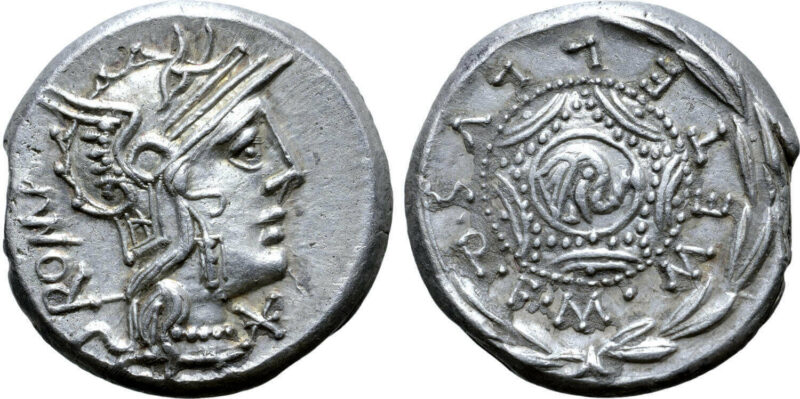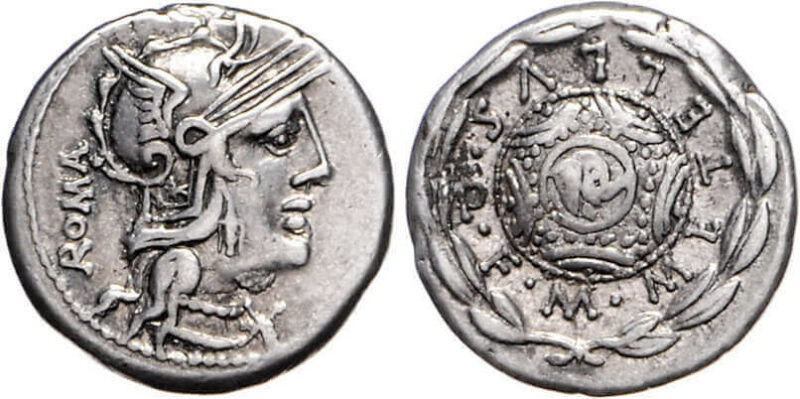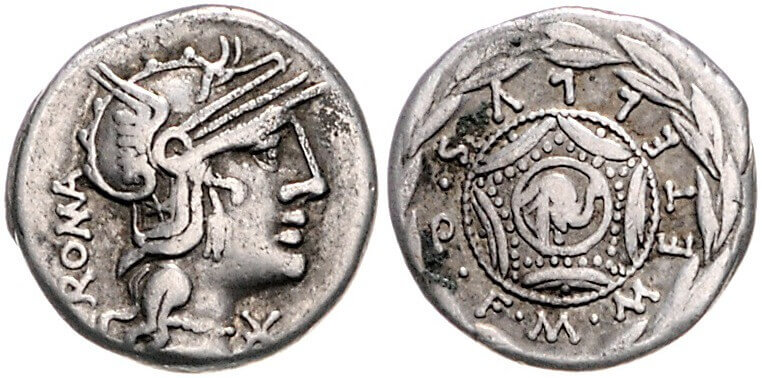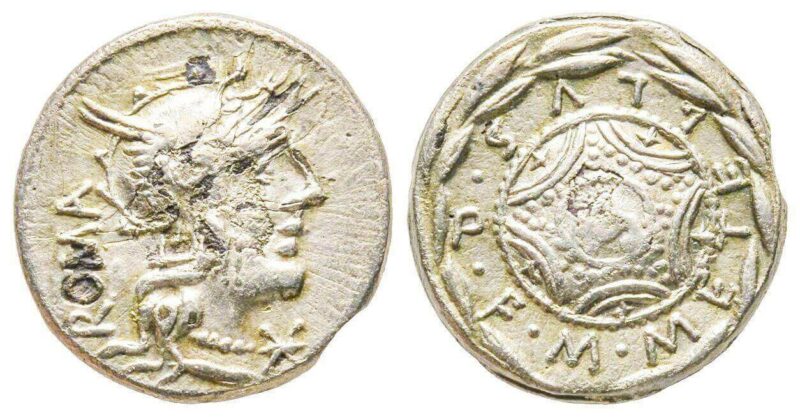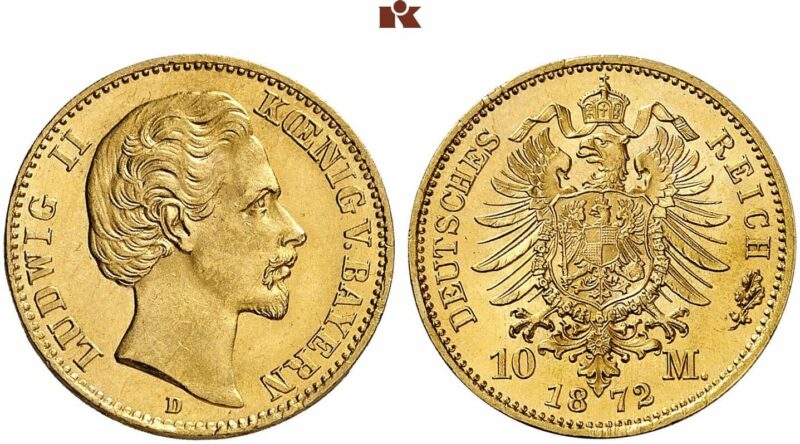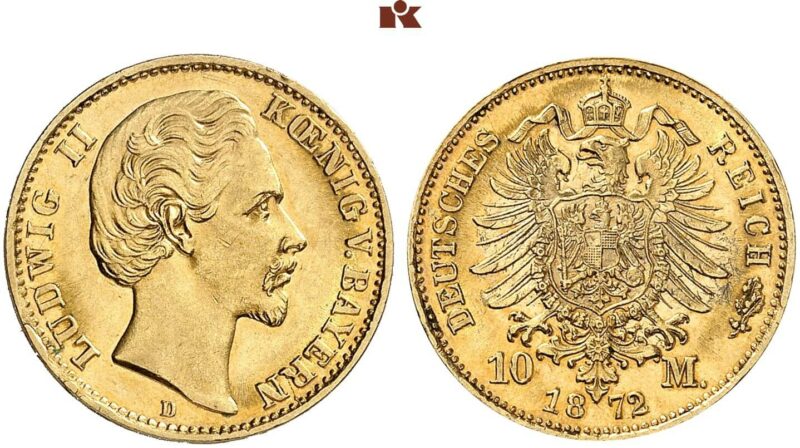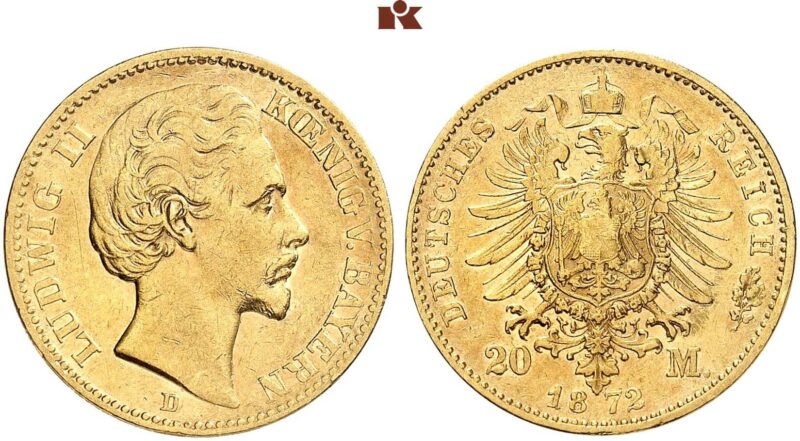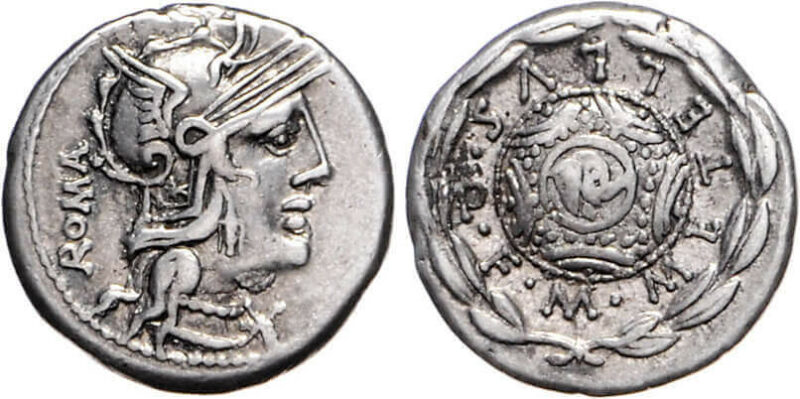Are you interested in coins and new to the world of collecting? We explain some basics and their background. Today, we talk about the important topic of coin grading. You will see: newcomers have a lot to keep in mind. We answer frequently asked questions about the subject.
To avoid any confusion: you might have already heard of grading institutes like NGC, which are well-established in America and Asia and enjoy increasing popularity in Europe too. This article, however, is not about the specific grades used by these companies but about the basic terms auction houses and dealers use to describe the quality of their coins, sometimes referred to as the European grading system. But don’t worry: we will come back to the so-called third-party grading in a future article.
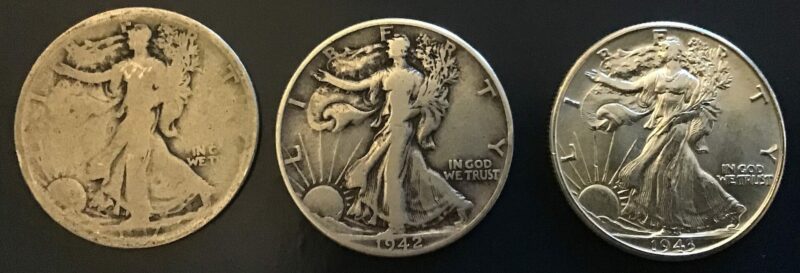
Although these coins were minted only a few years apart from each other, the traces time left on them differ greatly. Image: BrayLockBoy / CC BY-SA 3.0
What Are Coin Grades?
Before they become collectibles, old coins have usually experienced a lot. They may have circulated from hand to hand for years, or were buried in ground or water for centuries. As a result, coins are often badly damaged. They may be worn, rubbed, scratched or otherwise impaired. Even brand new coins can fall on the ground due to a clumsy gesture or show traces of handling – much to the annoyance of collectors.
The process of assessing the quality of a coin is called coin grading. In order to describe how well a coin is preserved, a number of well-defined terms have established themselves and help collectors and dealers around the world to estimate quite accurately how a coin looks like. These terms are referred to as coin grades. They originated in a time when catalogues did not include pictures of coins and it was necessary to describe the quality of a coin by using nothing but words. After all, how well a coin has been preserved has a decisive influence on the price.
What Coin Grades Are There?
The common coin grades are simple adjectives, with a clearly defined meaning. However, one should not rely on how these words sound. For example, a coin that is graded “fine” (f) got a very bad grade. Coins with this description show very obvious signs of wear; you will hardly encounter them in the trade. There are only two worse grades: “very good” (vg) and “good” (g). Usually, such coins only enter the market if the coin type in question is extremely rare.
Only with the next better grade than “fine” begins what is usually considered collectible in numismatics and regularly appears in the trade: “very fine” (vf). Even better is “extremely fine” (ef). The best grade that can be achieved with traditional minting techniques is referred to as “uncirculated”; however, nowadays you can find many synonyms used to describe the best-preserved pieces such as “Fleur de Coin” (FDC). An important side note: you will never be able to improve the grade of a coin by cleaning it.
What’s the Difference Between Coin Grades?
Let’s take a look at some examples to illustrate how such differences can look like. Here you can see five specimens of the same coin type from the Roman Republic that were described with different coin grades. Take a look at the first specimen which is graded “FDC” or “uncirculated”. Uncirculated means exactly what you’d expect: there mustn’t be any sign of usage, not the slightest sign of wear should be visible. And yes, ancient coins of this quality do exist, even if they are not encountered frequently. By the way, since the little elephant at the top of the Macedonian shield is not perfectly preserved, this coin was not described as “FDC” but as “about FDC”. In our example, you can observe how the quality deteriorates by looking at the dots on the shield as you click through the gallery.
Another example. This time it’s a 1872 coin from the Kingdom of Bavaria, which was part of the German Empire at the time. Regarding pieces minted by modern minting machines, the differences between coin grades are much smaller. Therefore, it is easier to look at the details to determine a coin’s quality. The best way to assess the quality of these specimens is to look at the small shield on the chest of the eagle. A coin is only “FDC” if this very shield is completely untouched. On an “extremely fine” coin, you can still see every detail of the shield. On a “very fine” coin, parts of the shield are worn and no longer visible. On a “fine” coin – this quality is rarely offered at auction, which is why we don’t have a picture of it – you still see contours on the shield.
Since the quality is assessed by the respective dealer, there are of course differences depending on what they focus on. Often, the age of the coin also has an influence on the assigned grade, although – in theory – this should not be the case. Ancient coins are sometimes allowed to show more traces of time than younger coins.
By the way, the quality of the two sides of a coin can differ significantly too. In such a case, two grades are given that are separated by a slash. The first grade refers to the obverse, the second to the reverse.
What Does “About Extremely Fine” Mean?
To indicate the quality even more precisely, three intermediate grades between the common coin grades are widely-used today. Let’s take the coin grade “very fine” and the next better grade “extremely fine” as an example. In between are the grades “very fine +”, “very fine to extremely fine” and “about extremely” fine, which you will regularly encounter in auction catalogues.
What About “Proof”?
Although “Proof” and “Proof-like” are often listed as coin grades, they are something else. These terms describe minting methods because such coins get a special treatment before the actual striking process. The blank – the circular piece of metal that is struck into a coin – and/or the die used to strike the coin are carefully polished before the minting process in order to create coins with an almost mirror-like reflective surface. As the process is very elaborate, only small quantities of these coins are minted – and they are particularly popular with collectors.
In general, you should know that there are marketing terms used to describe modern collector coins that do not say anything about their quality or coin grade.
Is the Grade Important?
That’s for you to decide! Let’s put it this way: If you belong to the small group of collectors who only want to enjoy the history of their coins, intend to keep them for the rest of their life and don’t really care if some details are no longer visible – then the grade isn’t important. However, if your collection is also supposed to be an investment and the value of the coins matter to you – which, let’s face it, is usually the case – then the coin grade is a crucial criterion. Take another look at the five differently graded specimens of the Roman coin in this slider. This time the captions indicate the hammer price they achieved. You’ll see: depending on the quality, the same coin can realise between 50 and 2,000 euros!
Are the Same Coin Grades Used Across the World?
Sort of. Many countries have established the habit of grading coins by using their own terms. However, the grades are roughly the same and there are usually clear rules about their equivalents in other languages. To keep track of which abbreviations from other countries mean what and which terms correspond to them in your language, we recommend looking at tables like this one on Wikipedia.
What Is Meant by Abbreviations Like “MS64 NGC” and “VF25 PCGS”?
Unfortunately, this question has to wait. The now widely-used American system for assessing the quality of coins differs greatly from the traditional European system. Investor-oriented trading came up with new habits in the 1970s. In the next part of this series, we will therefore deal with the Sheldon scale, grading institutes and coin holders.






